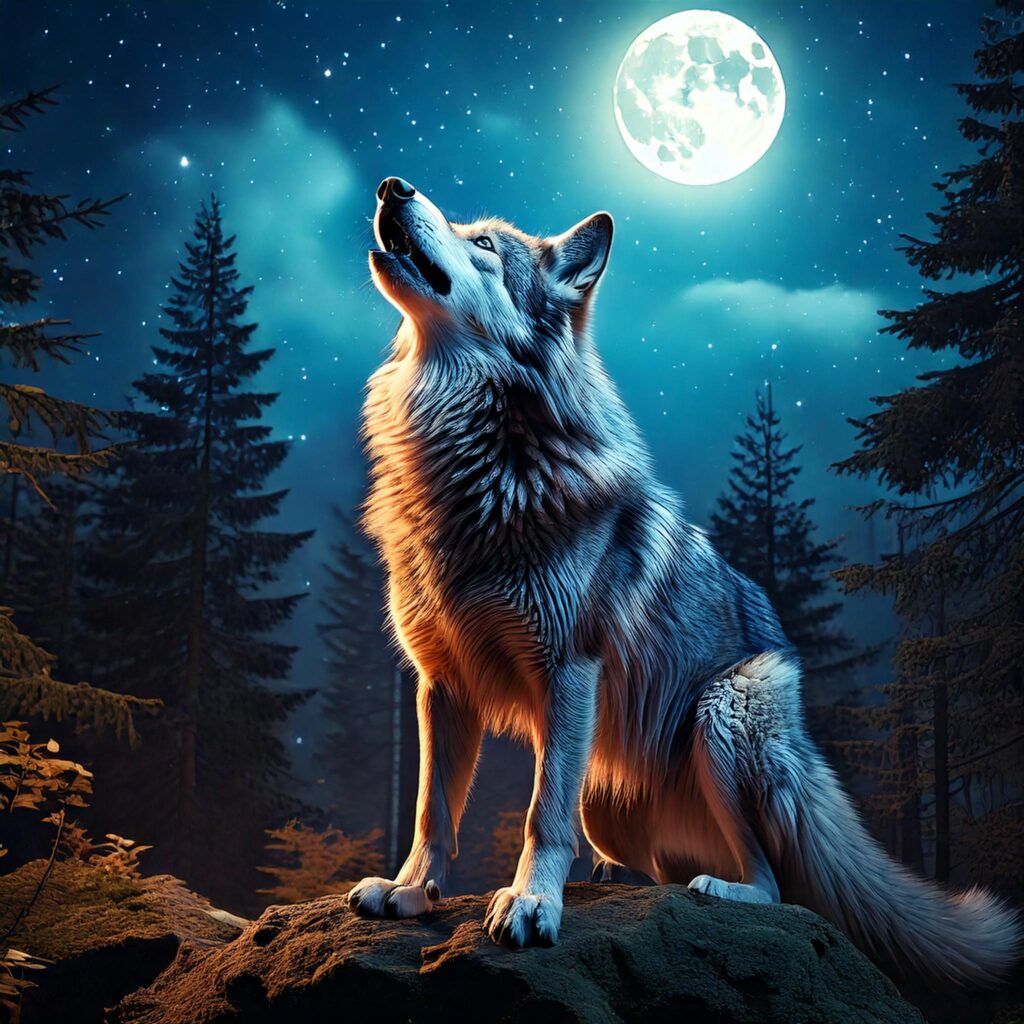Wolves are fascinating creatures known for their eerie howls that seem to echo through the wilderness at night. While it might look like they’re howling at the moon, there’s actually more to it. Wolves howl to find mates and locate other wolves in their pack.
When a wolf raises its nose to the sky, it’s not just for dramatic effect. This posture helps the sound travel farther, making it easier for other wolves to hear. Howling helps them communicate over long distances, which is especially important in the wild where they might be spread out.
So, next time you hear a wolf howling, remember that it’s not about the moon. It’s about connecting with their pack and finding a mate.
Some Fun Facts
- Pack Life: Wolves live and hunt in packs, which are often family units that include parents and their offspring. A typical pack consists of 6 to 10 wolves.
- Communication: Besides howling, wolves communicate using a variety of sounds like growls, barks, and whines. They also use body language, such as ear and tail positions, to convey messages.
- Alpha and Omega: In a wolf pack, there is usually an alpha male and female who lead the pack. The omega wolf is at the bottom of the hierarchy and often acts as a scapegoat to relieve social tension.
- Speed and Agility: Wolves are incredible runners. They can reach speeds of up to 37 miles per hour (60 kilometers per hour) when chasing prey. They are also capable of covering great distances, traveling up to 12 miles (20 kilometers) in a single day.
- Diet: Wolves are carnivores and their diet includes large mammals like deer, elk, and moose. They also eat smaller animals like rabbits and rodents, and occasionally scavenge.
- Strong Bite: Wolves have powerful jaws with a bite force of around 400 pounds per square inch (psi), which helps them take down large prey.
- Pups: Wolf pups are born blind and deaf, and it takes about two weeks for their eyes and ears to open. They start howling at around three weeks old.
- Sense of Smell: Wolves have an excellent sense of smell, which is about 100 times more sensitive than that of humans. This helps them track prey and sense danger.
- Cold Adaptation: Wolves are well-adapted to cold climates. They have a thick double-layered coat that keeps them warm in freezing temperatures.
- Myth and Legend: Wolves have been featured in myths, legends, and folklore across cultures, often symbolizing strength, cunning, and freedom.








